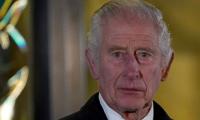LAHORE: A look at the macroeconomic indicators reveals the wretchedness of our economy as numbers, from national savings to inflation or jobless rates, are extremely demoralising.
Macroeconomic indicators, also known as fundamental data releases, are statistics or readings that reflect the production or output of an economy, government, or sector.
These indicators include the consumer price index or inflation, producers manufacturing index or industrial production, construction spending, unemployment rates, exports, imports, trade deficit, current account deficit, fiscal deficit, poverty, and foreign exchange reserves.
These indicators reflect the state of wellbeing of the population. The contention of our finance minister that after achieving 6 percent annual GDP growth Pakistan would not need the IMF (International Monetary Fund) is not correct. The GDP growth becomes secondary when most indicators are bad and the growth benefits are captured exclusively by the elite.
Inflation is an important macroeconomic indicator that measures the increase in prices. Higher inflation means higher cost of living. Inflation has averaged over 10 percent in the last 40 months. It has pushed more than two million individuals into poverty. Using the lower-middle-income poverty rate ($3.2/day), the World Bank calculated that Pakistan's poverty rate was 39.3 percent in 2020-21. Its saving rates are 17 percent of the GDP compared with saving rates of 45 percent in China, 31 percent India, and 36 percent in Bangladesh. Saving rates determine the ability of the economy to finance its investment needs through domestic resources. Countries, where saving rate is higher need less or no foreign financial assistance for investment. Pakistan, because of its low saving rate depends on foreign inflows for accelerating its GDP growth.
Industrial production determines the ability of the economy to create new jobs. Barring a few car manufacturers, none of the large industries in Pakistan is operating at full capacity. This has hampered job creation.
The large-scale manufacturing sector posted an increase of 3.5 percent in the first five months of this fiscal.
This growth is not enough and is increasing unemployment rates as the country needs to add at least 2 million jobs a year (4 million jobs should be created but women are not factored in as they largely remain out of the economic stream).
Producer’s manufacturing index that depicts the perception of manufacturers about the economy is not published in Pakistan. The MCB did publish PMI a decade back on a monthly basis, but the practice has been discontinued. This indicator helps the government remove flaws that reduce confidence of manufacturers.
Construction spending is another indicator of a growing economy. Domestic cement uptake in the country has declined in the first six months of this fiscal by over 5 percent and by 16 percent in December that shows all is not well in the construction sector that absorbs the bulk of the unskilled labour force in the country.
Abnormal increase in the rates of construction materials discouraged new construction activities. The public sector development programme has also been truncated that also depressed construction activities.
Imports of the country increased by a whopping 58.84 percent to $29.27 billion in the first seven months of this fiscal, while exports registered an increase of 23.96 percent to reach $14.25 billion during the same period. The trade deficit widened by over 91 percent to $15 billion. The increase in exports is a good sign but its benefits have been destroyed by more than double the increase in imports. Even high remittances failed to cover the ever-increasing imports and other foreign outflows like debt servicing and profit repatriation. The current account deficit continues to grow and high fiscal deficit is also contributing to it.
The government feels proud in maintaining enough foreign exchange reserves to finance about three months of imports. But the way these reserves are maintained is not beneficial for the economy in the long run.
It is obvious that foreign exchange reserves of a country should deplete if it is running huge trade and fiscal deficits and debt-free inflows are not enough to plug the deficits.
We are maintaining the foreign exchange reserves by regularly managing foreign loans. With the passage of time the interest on new loans has increased to an unmanageable size. We need around $3 billion every four to six months to maintain our reserves. The reserves regularly deplete to levels when the government must scramble for more loans on tougher terms.
We are mortgaging the future of the nation through this practice. The rupee always remains under pressure, only recovering for a few weeks only after receiving foreign loans.
The investors, both domestic and foreign, are shrewd businessmen, knowing very well the quality of our foreign reserves. They tend to stay away until they are provided impossible incentives not available anywhere in the world.
The state of our economy is not satisfactory. Instead of showing complacency the rulers should be worried and devise ways to come out of this mess.
The headquarters of the Sui Southern Gas Company . — APP FileKARACHI: Sui Southern Gas Company has launched a fresh...
The logo of the ExpoMed Eurasia. — CA MI websiteKARACHI: Pakistan is participating in ExpoMed Eurasia, a leading...
Gold bars are seen in this undated file photo. — AFP/FileKARACHI: Gold prices increased by Rs500 per tola on...
FFBL Head Office building can be seen in Islamabad. — FFBL WebsiteKARACHI: Fauji Fertilizer Bin Qasim Limited has...
Representational file of an BMW car. — AFP FileLAHORE: Small improvements in economic credentials of the country are...
A fuel station worker filling petrol in vehicle at a fuel station in Karachi on Tuesday, April 16, 2024KARACHI: After...







